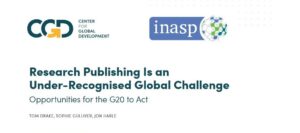Fuel consumption and emissions in Nepalese capital could be reduced by almost half with slight changes in transport policy
A recent research article published in the journal ‘Hydro Nepal: Journal of Water, Energy and Environment’ has shown that fuel demand for road transportation and the emissions from it will rise sharply in Kathmandu over the next 15 years if unchecked and this will significantly affect Nepal’s economy. With slight changes in transport policy the emissions and fuel demands could be reduced by up to half, the study suggests.
The World Pollution Index 2016 marked Kathmandu as the third most polluted city in the world. The Nepalese capital of Kathmandu with a population of 2.5 million people is one of the fastest growing cities in South Asia. The rapid urbanization has led to a sharp increase in the number of light duty vehicles and motorcycles in Kathmandu. About two thirds of the total vehicles registered in Nepal are in Kathmandu. More than 90% of the vehicles registered in Nepal are personal vehicles, mainly motorcycles and cars.
Improving public transport systems and the introduction of hybrid vehicles in the Nepalese capital of Kathmandu would significantly reduce fossil fuel consumption and carbon emission, the study has found. The study ‘Road Transportation Energy Demand and Environmental Emission: A Case of Kathmandu Valley’ suggests four alternatives – increasing public bus penetration, improved fuel economy, electric motorbikes and hybrid electric cars – to reduce demand of petrol and diesel for road transport and reduce emissions of carbon dioxide and carbon monoxide.
“If different road transportation policies are implemented cumulatively (i.e., public bus penetration for mass transportation, electric motorbikes instead of conventional gasoline ones, improving fuel efficiency of vehicles, and hybrid electric cars), the fuel demand for the road transport will be reduced by 38% over the next 15 years,” said one of the authors of the research article, Dr Iswor Bajracharya, who is a visiting lecturer at the Institute of Engineering, Pulchowk Campus, Nepal.
“Our study has shown that motorcycles consume the most fuel and produce the largest amount of emissions,” said Dr Bajracharya. “And if the number of motorcycles increases at the current rate, they will consume the largest amount of energy (about 43% of total vehicle energy demand) than rest of other vehicle category.”
The research has shown that 39% of the fuel demand for road transportation in Kathmandu goes to motorcycles and 26% goes to light-duty vehicles (LDVs). Replacing the motorcycles and LDVs with large public buses would reduce the energy demand by 19%. The study has also found that the new scenario would reduce carbon dioxide emission by 36%, carbon monoxide by 34% and particulate matter (PM10) by 30%.
“There could be other alternatives to fossil fuel such as hydroelectricity for road transportation,” said Dr Bajracharya. “But development of large infrastructure takes both time and investment so we suggest the four policies as they could be achieved with only slight changes to our transport system.”
“If the government introduces policies to encourage public buses for mass transportation, discourages gasoline motorbikes, cars and promotes electric bikes by waiving off duties for these vehicles for some years, this plan can be achieved,” he added.
The study was conducted against the back-drop of the trade embargo imposed by India on Nepal, which has resulted in a huge fuel crisis, stranding more than 50% of the public vehicles in Kathmandu.
Dr Iswor Bajracharya and Dr Nawraj Bhattarai conducted the study and analysed the data using the Long-range Energy Alternative Planning System (LEAP) software.
The research article titled ‘Road Transportation Energy Demand and Environmental Emission: A Case of Kathmandu Valley’ is published in the latest issue (Vol. 18, 2016) of Hydro Nepal: Journal of Water, Energy and Environment, pages 30-40. The article is made available online via the Nepal Journals Online (NepJOL) platform, which is part of the JOL Project supported by INASP.
About the Journal
Hydro Nepal is a biennial journal, which has been published in Nepal since 2007 by Media for Energy Nepal Pvt Ltd. The journal provides a common platform for professionals and experts to exchange ideas, knowledge and insights for sound, sustainable and environmentally-friendly development of water resources and generation of hydroelectric power. The journal is part of the NepJOL (Nepal Journals Online) platform.
About NepJOL
Nepal Journals Online (NepJOL) hosts over 100 journals published from Nepal, covering the full range of academic disciplines. The objective of NepJOL is to give greater visibility to participating journals and to the research they convey. NepJOL was initiated in June 2006 and officially launched in September 2007. It is a project supported by INASP and locally managed by Tribhuvan University Central Library. It aims to promote the awareness and use of Nepal-published journals in all disciplines by providing access to tables of contents (TOCs), abstracts and full text on the Internet.
About INASP
INASP is an international development charity working with a global network of partners to improve production, sharing and use of research information and knowledge, so that countries are equipped to solve their development challenges. In particular, INASP works to strengthen the availability, access and use of international research information by researchers in developing countries and the production, quality, dissemination and access of research outputs from researchers in those same countries.
Disclaimer: Research published in journals hosted on the NepJOL platform is selected by the journals in accordance with their own editorial processes and criteria. INASP and Tribhuvan University Central Library provide hosting and guidance on good practices but are not involved in selection of research.
For Further Information
Thakur Amgai, Communications Consultant, INASP
email tamgai@inasp.info
Dr Sangita Shrestha, Communications Officer, INASP
email sshrestha@inasp.info




